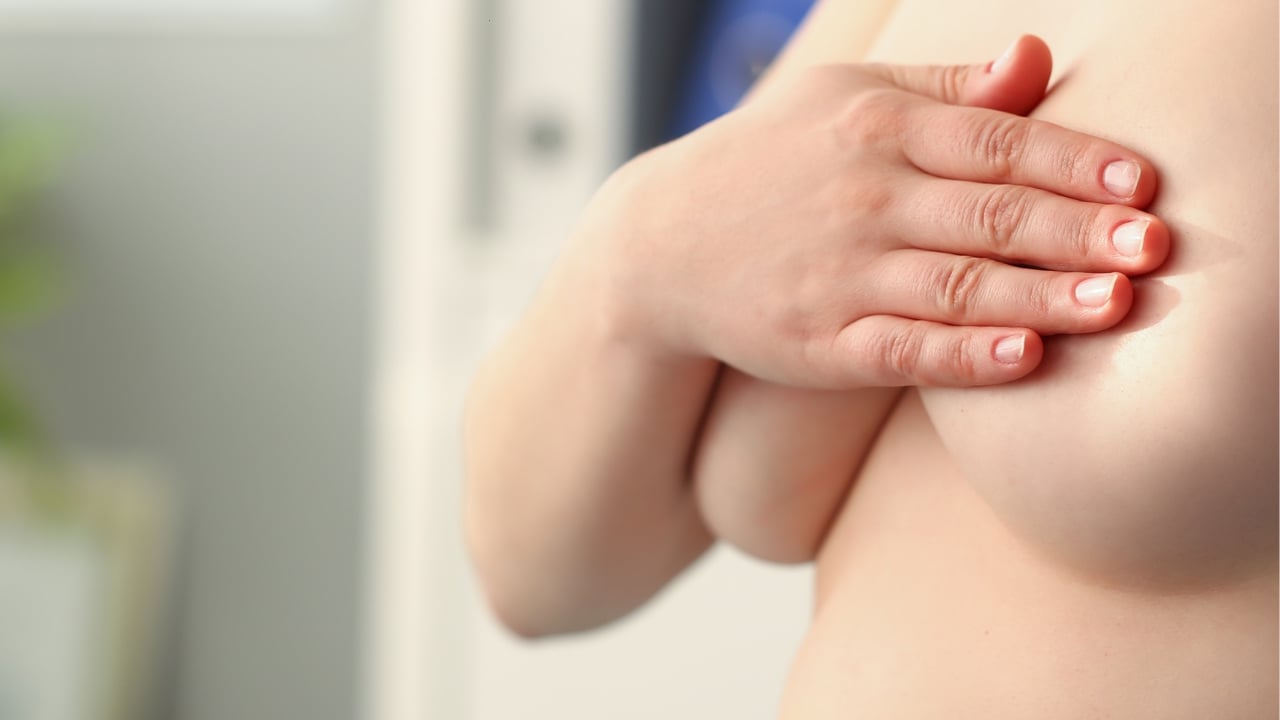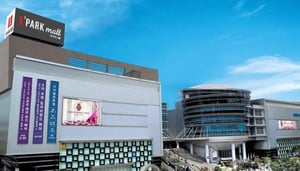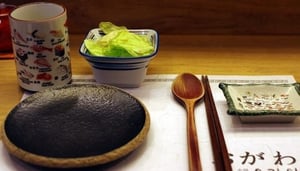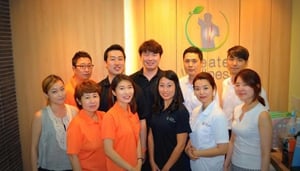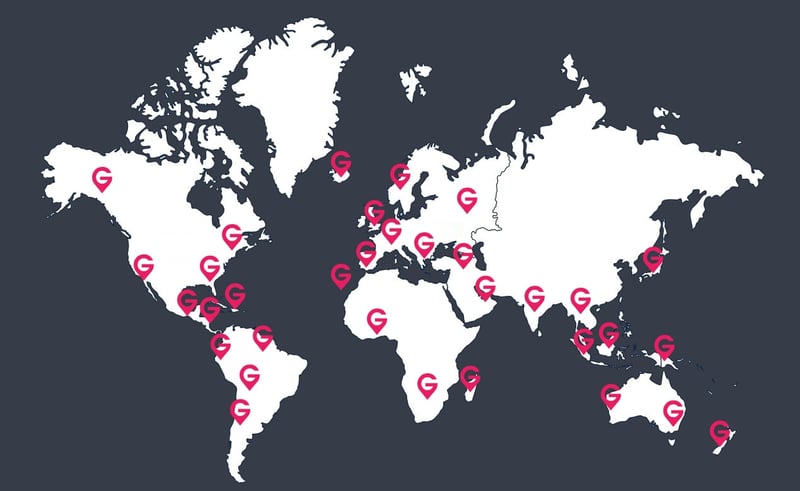Nipple Surgery in Korea | The Costs, Best Clinics, Procedure Details & more!
Everything you need to know about nipple surgery in Korea
Nipple surgery is a specialized type of plastic surgery that addresses various aesthetic and functional issues related to the nipples. In Korea, this procedure has garnered significant attention due to the country's advanced medical technology and skilled plastic surgeons. Offering a range of solutions from nipple reduction to nipple reconstruction, Korea has become a go-to destination for individuals seeking these tailored surgical interventions.
Table of Contents
Best Clinics for Nipple Surgery in Korea
Lydian Plastic Surgery Clinic
Lydian Cosmetic Surgery & Dermatology Clinic is located in the prestigious Cheongdam area of Gangnam in Seoul. Renowned for its comprehensive cosmetic services, the clinic stands out for its expertise in procedures, such as nipple surgery, provided by the highly skilled Dr. An Kyung Chun.
Benefits of Having Nipple Surgery at Lydian Clinic - Expertise of Dr. An Kyung Chun: With over two decades of specialized experience in body sculpting and cosmetic procedures, Dr. An is a globally recognized practitioner whose extensive experience ensures top-notch outcomes. - Personalized Care: The clinic's boutique approach ensures that each patient receives personalized attention, tailored to meet their specific needs and aesthetic goals. - Cutting-Edge Techniques: The use of the latest and most innovative surgical methods, including minimally invasive procedures, results in reduced scarring and quicker recovery times. - Reputable Track Record: As a leader in cosmetic surgery, the clinic has an excellent reputation and a high satisfaction rate, particularly among VIPs and celebrities. - Comprehensive Services: From nipple surgery to advanced body sculpting techniques, the clinic offers a wide range of cosmetic enhancements, ensuring that patients can achieve their desired look.
Schedule a free consultation If you are considering nipple surgery, Lydian Cosmetic Surgery & Dermatology Clinic is your ideal destination for expert care and exceptional results. Schedule a free consultation today to discuss your goals with Dr. An Kyung Chun and discover the best options for enhancing your appearance. Experience the art of transformation at Lydian Clinic where your aesthetic dreams can become a reality.
You can check out their website here: Lydian Plastic Surgery Clinic Website
Seojin Plastic Surgery Clinic
Seojin Plastic Surgery Clinic in the heart of Gangnam, Seoul, offers advanced procedures under the esteemed guidance of Dr. Director Lee Hyeong-Min. Specializing in breast surgery, Seojin Clinic provides personalized treatments utilizing state-of-the-art technology to ensure top-tier results.
Benefits of Nipple Surgery at Seojin Plastic Surgery Clinic
- Advanced Techniques: The clinic uses cutting-edge procedures to adjust the size or shape of the nipples for optimal results.
- Personalized Consultations: Each patient receives a tailored consultation to address individual needs and desires.
- Expert Care: Under the guidance of Dr. Director Lee Hyeong-Min, patients benefit from the expertise and dedication of a highly skilled cosmetic surgeon.
- State-of-the-Art Technology: Incorporating 3D imaging and high-definition endoscopy to enhance precision and safety.
- Comprehensive Post-Op Care: Ensuring thorough follow-up and support to promote recovery and satisfaction.
With an emphasis on safety, comfort, and exceptional outcomes, Seojin Clinic stands out as a premiere destination for those seeking nipple surgery in Korea.
Schedule a Free Consultation
Take the first step towards your aesthetic transformation by scheduling a free consultation at Seojin Clinic. Connect with our team and explore how personalized cosmetic solutions can help you achieve your aesthetic goals. Contact us today to begin your journey towards enhanced confidence and beauty.
You can check out their website here: Seojin Plastic Surgery Clinic Website
THEPLUS Plastic Surgery
THE PLUS Plastic Surgery clinic, nestled in the bustling Garosu-gil area of Gangnam, Seoul, epitomizes the pinnacle of world-class plastic surgery. The clinic spans four floors specifically designed to accommodate a full spectrum of services, from initial consultation through surgery and post-operative skincare.
Benefits of Nipple Surgery at THE PLUS Plastic Surgery
- Expert Surgeons: Surgeons at THE PLUS are not only practitioners but also eminent medical researchers, ensuring the highest level of expertise and care.
- State-of-the-Art Facility: The clinic's four floors are specifically designed to offer comfort and efficiency throughout your cosmetic surgery journey.
- Personalized Care: Dedication to personalized patient communication ensures every step of your treatment is tailored to your unique needs.
- Continuous Advancements: Active participation in domestic and international medical symposiums keeps the clinic at the forefront of cosmetic surgery advancements.
- Renowned Leadership: Directed by Dr. Jeong Jae Yong and Dr. Kim Taek Kyun, the clinic offers highly skilled and respected surgeons recognized both in Korea and internationally.
Schedule a Free Consultation
Take the first step towards achieving your aesthetic goals by scheduling a free consultation with THE PLUS Plastic Surgery. Our highly skilled team is ready to provide you with the personalized care and advanced techniques that ensure the best possible outcome. Contact us today to book your consultation and explore the transformative possibilities.
You can check out their website here: THEPLUS Plastic Surgery Website

Popularity and Benefits of Undergoing Nipple Surgery in Korea
Nipple surgery in Korea has seen a rise in popularity due to several compelling factors:
Advanced Medical Technology: Korea is at the forefront of medical technology, ensuring that procedures are conducted with the highest level of precision and safety.
Skilled Surgeons: Korean plastic surgeons are renowned for their expertise and meticulous attention to detail, attributes that are critical for successful nipple surgeries.
Comprehensive Care: Clinics in Korea often provide comprehensive care packages that include pre-surgical consultations, detailed follow-up care, and post-operative recovery plans.
Affordable Costs: Despite the high quality of medical care, the costs of nipple surgery in Korea are often more affordable compared to other countries, making it an attractive option for many.
Customized Procedures: Korean clinics offer a variety of customized nipple surgery options, tailored to meet the specific needs and desired outcomes of each patient.
Efficient Recovery: The use of advanced techniques and technologies can result in shorter recovery times, allowing patients to resume their normal activities more quickly.
With these benefits, it is no surprise that Korea has become a preferred destination for individuals seeking nipple surgery. Whether the goal is to enhance aesthetics or address medical conditions, the country offers a range of high-quality options to suit diverse patient needs.
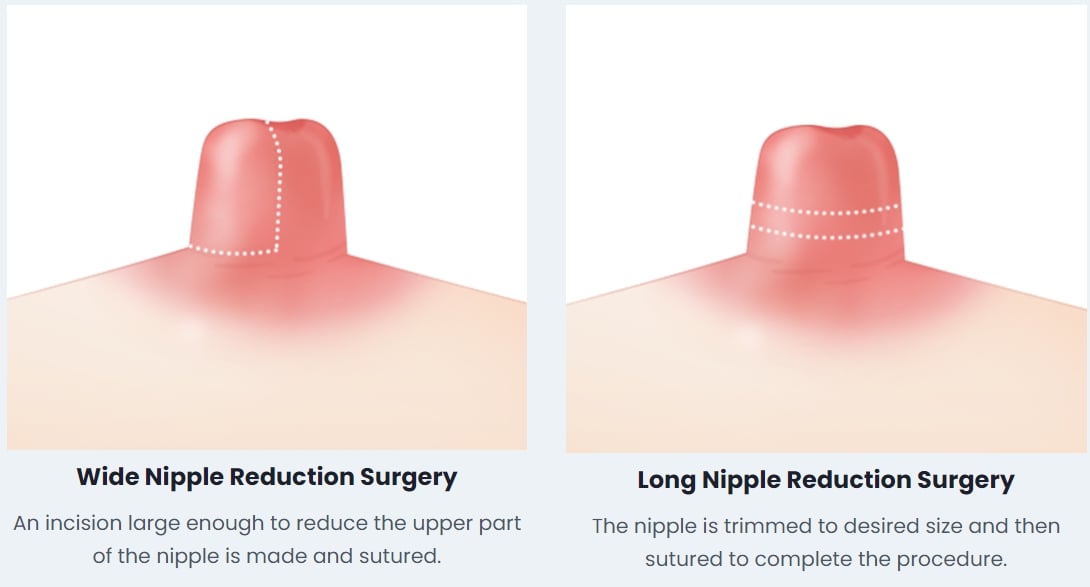
Understanding Inverted Nipples
Inverted nipples are a common condition where the nipples are retracted into the breast instead of protruding outward. This condition can affect one or both nipples and may be present from birth or develop later in life.
Definition and Characteristics of Inverted Nipples
Inverted nipples can be classified into three grades, depending on their severity:
- Grade 1: The nipple can be easily pulled out and tends to maintain its projection. This type generally does not require surgical intervention.
- Grade 2: The nipple can be pulled out, but it tends to retract quickly. This level of inversion may cause functional and aesthetic concerns.
- Grade 3: The nipple is severely retracted and difficult to pull out. This type usually necessitates surgical correction due to the potential complications and impact on breastfeeding.
Potential Complications and Issues
Inverted nipples can lead to several complications and issues, including:
Aesthetic Concerns: Many individuals with inverted nipples feel self-conscious about their appearance. The condition can affect their self-esteem and body image.
Breastfeeding Difficulties: The most significant functional issue related to inverted nipples is difficulty with breastfeeding. Severely inverted nipples can make it hard for an infant to latch on properly, leading to feeding challenges and potential nutritional deficits for the baby.
Hygiene Issues: Inverted nipples can create small folds or pockets where debris and bacteria can accumulate, potentially leading to infections or irritation.
Psychological Impact: The aesthetic and functional issues can cause emotional and psychological distress, contributing to anxiety or depression in some individuals.
Understanding the characteristics and potential complications of inverted nipples is crucial for addressing both aesthetic and functional concerns.
Causes of Inverted Nipples
Congenital Causes
Congenital causes of inverted nipples are present from birth and are often due to developmental issues during fetal growth. These issues can involve:
- Shortened Milk Ducts: In some cases, the milk ducts may be abnormally short, which pulls the nipple inward.
- Fibrous Bands: The presence of fibrous tissue bands beneath the nipple can tether it downwards, preventing it from protruding.
- Underdeveloped Breast Tissue: When the breast tissue doesn't develop fully, it may not provide adequate support to push the nipple outward.
Because these causes are congenital, individuals may notice inverted nipples from early childhood or during puberty.
Acquired Causes
Inverted nipples can also develop later in life due to various acquired factors. These may include:
- Injury: Trauma to the breast, such as an accident or impact, can cause scar tissue formation that may draw the nipple inward.
- Breast Cancer: In some cases, changes in nipple appearance, including inversion, may be an indication of underlying breast cancer. Tumors can create tension or structural changes within the breast, leading to nipple retraction.
- Complications After Surgeries: Surgical procedures involving the breasts, such as breast augmentation, reduction, or mastectomy, can sometimes result in nipple inversion. The scarring and alteration of tissue during surgery can affect the nipple's projection.
- Infections: Chronic infections or inflammations in the breast tissue, such as mastitis, can result in scarring and nipple inversion.
- Rapid Weight Loss: Significant weight loss can change the structure and support of the breast tissue, potentially leading to nipple inversion.
Understanding the causes of inverted nipples is essential for proper diagnosis and treatment planning. Whether congenital or acquired, each cause requires a tailored approach to address the underlying issues effectively.
Nipple Surgery Methods
Nipple surgery addresses various aesthetic and functional concerns related to the nipples. The general objectives of nipple surgery include:
- Correction of Inverted Nipples: Enhancing the appearance and functionality of nipples that are retracted.
- Aesthetic Improvement: Improving the overall look of the nipple-areolar complex.
- Symmetry: Achieving symmetrical nipples for a more balanced appearance.
- Restoration of Function: Aiding in breastfeeding capabilities when possible.
Overview of Different Surgical Techniques for Correcting Inverted Nipples
T-Cut Chin Surgery
This method involves:
- Incision Technique: A T-shaped incision is made at the base of the nipple.
- Release of Fibrous Bands: The surgeon releases any fibrous bands or adhesions tethering the nipple inward.
- Reshaping and Suturing: The nipple is reshaped, and the incisions are sutured to maintain the projection.
Purse-String Suture Method
This technique includes:
- Circular Suture: A circular suture is placed around the base of the nipple.
- Tension Adjustment: The suture tension is adjusted to pull the nipple outward.
- Securing Position: The suture is tied and secured to keep the nipple in its new position.
Lactiferous Duct Incision Method
Steps involved in this method are:
- Incision Around Ducts: Incisions are made around the lactiferous ducts at the nipple base.
- Release and Adjust: The ducts are gently released and adjusted to allow for nipple eversion.
- Stabilization: Sutures are placed to stabilize the now everted nipple.
Each of these techniques has specific indications based on the degree of nipple inversion and individual patient factors. A consultation with a qualified plastic surgeon is crucial to determine the most suitable method for each case.
Areola Reduction and Nipple Hypertrophy
Nipple Hypertrophy and Its Prevalence
Nipple hypertrophy is characterized by an enlargement of the nipples and/or areolas. This condition can affect both men and women and may arise due to various factors, including genetics, hormonal changes, or developmental anomalies.
Prevalence Among Different Populations
- Women: Areola and nipple hypertrophy are relatively more common among women, often manifesting during puberty, pregnancy, or breastfeeding due to hormonal changes.
- Men: Though less common in men, some may experience nipple hypertrophy particularly related to gynecomastia, where there is an enlargement of breast tissue.
- Ethnic Variations: Studies indicate that nipple hypertrophy affects diverse populations, but certain ethnic groups may experience different prevalences and severities due to genetic factors.
Methods and Procedures for Areola Reduction
Areola reduction surgery aims to decrease the diameter of the areola, creating a more proportionate appearance and often alleviating physical discomfort. Below are the common methods and procedures used:
Periareolar Incision:
- Procedure: A circular incision is made around the existing areola. The excess pigmented tissue is excised, and the remaining skin is sutured to create a smaller, tighter areola.
- Advantages: Minimally invasive with a concealed scar along the natural border of the areola.
Vertical or Lollipop Incision:
- Procedure: This technique involves a vertical incision running from the lower edge of the areola downward. Excess tissue is removed, and the incision is closed, resulting in a lifting effect.
- Advantages: Suitable for significant reductions and offers additional contouring.
Areola Grafting:
- Procedure: For substantial hypertrophy, a free nipple graft may be performed. The areola is completely removed, resized, and grafted back onto the breast.
- Advantages: Effective for extreme cases and allows extensive reshaping.
Role of Areola Reduction in Improving Nipple Aesthetics and Functionality
Areola reduction surgery is pivotal not only for aesthetic enhancement but also for functional benefits. The improvements include:
- Enhanced Appearance: A smaller, well-proportioned areola enhances the overall aesthetic of the breast, contributing to better body image and self-confidence.
- Physical Comfort: Reducing the size of the areola can alleviate discomfort associated with irritation from clothing and physical activities.
- Breastfeeding: In some cases, excessively large areolas can impede effective latch during breastfeeding. Surgical reduction can improve breastfeeding mechanics.
- Correction of Congenital Conditions: Some individuals with congenital anomalies may benefit from areola reduction, achieving a more typical anatomy and function.
Areola reduction surgery thus plays a critical role in addressing both the cosmetic and physiological aspects of nipple hypertrophy, providing significant benefits to patients seeking to improve their quality of life.
Ideal Candidates for Nipple Surgery
Nipple surgery is a specialized procedure that addresses a variety of aesthetic and functional concerns. Determining the ideal candidates for this surgery involves evaluating both physical attributes and personal motivations. Here are some key criteria for identifying suitable candidates for nipple surgery:
- Asymmetric Nipples: Individuals who have noticeable differences in the size, shape, or positioning of their nipples.
- Inverted Nipples: Those who experience inward-turning nipples, which can be a congenital condition or arise from trauma.
- Large or Long Nipples: Patients who find that their nipples are disproportionately large or elongated, possibly causing discomfort or self-consciousness.
- Nipple Reconstruction Post-Mastectomy: Breast cancer survivors who have undergone mastectomy procedures may seek nipple reconstruction to restore their body's appearance.
- Nipple Reduction: Men and women experiencing enlarged areolas that lead to aesthetic concerns or physical discomfort.
- Gynecomastia: Men with excess breast tissue or abnormal nipple appearance may undergo surgery to correct these issues.
- Congenital Abnormalities: Those born with nipple abnormalities that impact their confidence or quality of life.
- Trauma or Injury: People who have suffered accidental injuries that affect the shape and appearance of their nipples.
Different Patient Scenarios Where Nipple Surgery is Beneficial
Understanding various patient scenarios can help illustrate how nipple surgery can be beneficial:
- Post-Pregnancy Changes: Women who have experienced changes in nipple shape and size after pregnancy and breastfeeding may choose nipple surgery for aesthetic restoration.
- Cosmetic Enhancement: Individuals looking for improved nipple symmetry and aesthetic appeal as part of a broader body enhancement plan.
- Self-Confidence Boost: Patients seeking to enhance their self-esteem and body image through correcting physical imperfections.
- Post-Mastectomy Reconstruction: Women who have had their nipples removed during mastectomy procedures and desire a comprehensive breast reconstruction.
- Gynecomastia Correction in Men: Men afflicted by gynecomastia who want a more traditionally masculine chest appearance.
- Solving Physical Discomfort: Those experiencing physical discomfort due to nipple shape or size, affecting their quality of life.
- Correcting Developmental Issues: Patients with congenital nipple abnormalities seeking functional and aesthetic corrections.
Frequently Asked Questions
What are the common types of nipple surgery available in Korea?
In Korea, the most common types of nipple surgery include nipple reduction, nipple augmentation, correction of inverted nipples, and areola reduction. Each of these procedures aims to enhance the aesthetic appearance and functionality of the nipples and areolas.
How long is the recovery period after nipple surgery?
The recovery period typically ranges from 1 to 2 weeks. During this time, patients may experience some swelling and discomfort, which can generally be managed with prescribed medications.
Are there any risks or complications associated with nipple surgery?
As with any surgical procedure, there are potential risks and complications which may include infection, scarring, changes in nipple sensation, or asymmetry. However, these risks are generally low and can be minimized by choosing a qualified and experienced surgeon.

